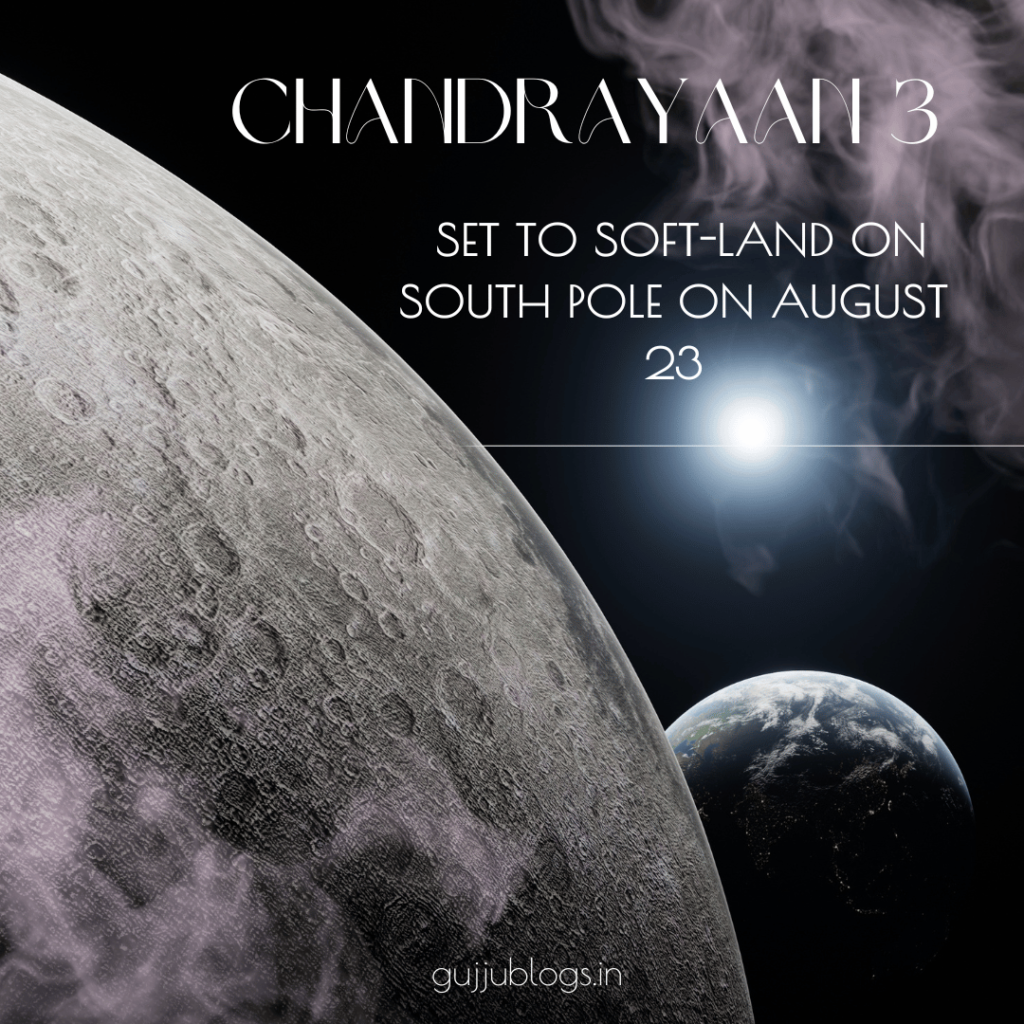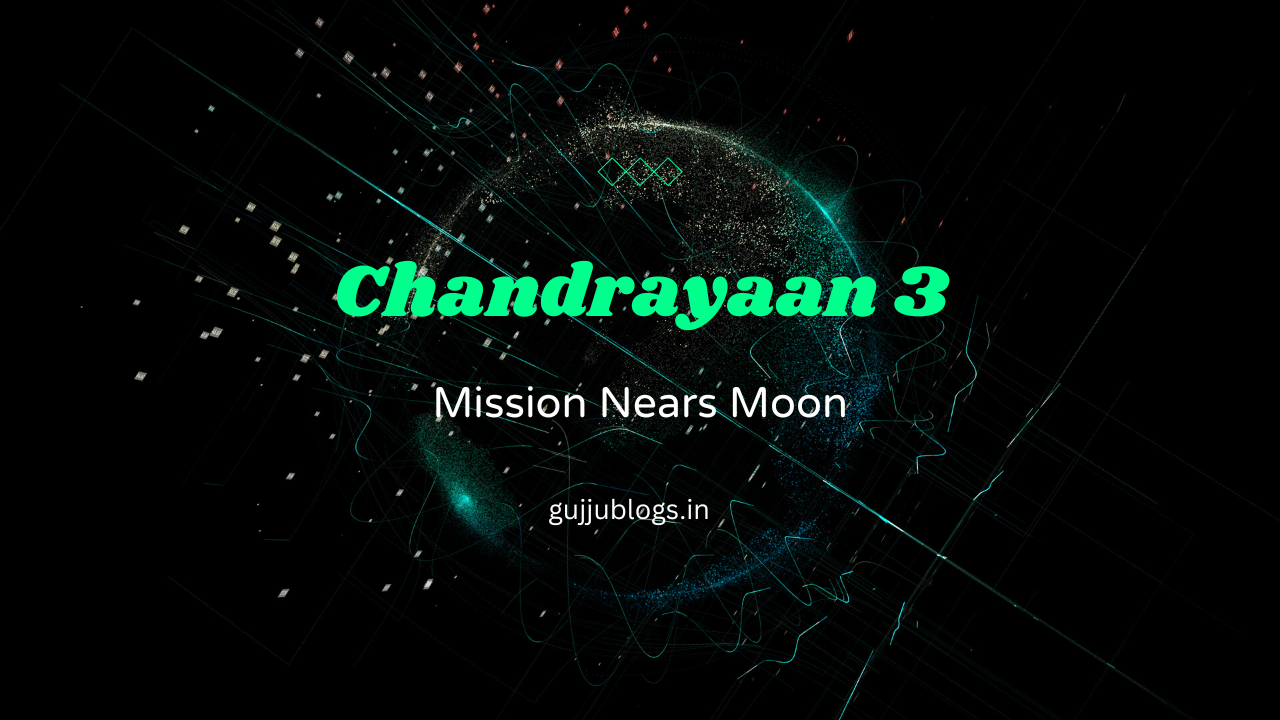The Indian Space Research Organisation (ISRO) announced today that its Chandrayaan-3 mission is nearing the Moon. The spacecraft is currently in an orbit of 113 kilometers by 157 kilometers, and it is scheduled to make its first soft-landing attempt on the Moon’s south pole region on August 23.
Lunar Model soft Landing explained
The soft landing of the lunar module is a complex and challenging process. It requires precise control of the lander’s speed, altitude, and orientation. The success of the soft landing depends on a number of factors, including the accuracy of the lander’s navigation system, the reliability of its engines, and the smoothness of its descent.
- The lunar module enters the Moon’s atmosphere and begins to slow down.
- The lander deploys its parachutes to further slow down its descent.
- The lander’s engines fire to control its descent and to keep it on course.
- At an altitude of about 100 meters, the lander scans the surface for any obstacles.
- If no obstacles are detected, the lander continues its descent.
- The lander’s engines fire to cushion the landing.
- The lander touches down on the Moon’s surface.

Will Chandrayaan-3 be the first spacecraft to land on Moon’s south pole?
India and Russia were in a tight race to land their spacecraft on the Moon’s south polar region. India’s Chandrayaan-3 is expected to land on August 23, while Russia’s Luna-25 could land a day or two earlier, on August 21. But now the tables have turned as Russia’s Luna-25 mission has failed.
Luna-25 had a head start, as it launched on August 10 and took a more direct route to the Moon. Chandrayaan-3 launched on July 14 and had to take another route to conserve fuel. As of now Luna-25 has crashed onto the surface of moon.
Both spacecraft are carrying scientific instruments to study the Moon’s south pole, which is thought to be rich in water ice. A successful landing by either spacecraft would be a major achievement for their respective space programs. All hopes are now set for Chandrayaan-3.
| Characteristic | Chandrayaan-3 | Luna-25 |
| Launch date | July 14, 2023 | August 10, 2023 |
| Landing date | August 23, 2023 | August 21, 2023 (expected) |
| Launch vehicle | GSLV Mk III | Proton-M |
| Mass | 3,800 kg | 1,750 kg |
| Landing site | South Pole | South Pole |
| Scientific instruments | 11 | 8 |
Current Status of Chandrayaan 3
The Chandrayaan-3 Lander module, which comprises the Vikram lander and the Pragyan rover, has successfully completed its second deboosting operation. The operation reduced the module’s orbit from 113 kilometers to 157 kilometers. The Propulsion Module will continue to orbit the Moon in its current orbit for months or years to come.
The deboosting operation was conducted on Sunday, August 20, 2023. It was the second of two deboosting operations that will be conducted to bring the Lander module closer to the Moon’s surface. The final deboosting operation is scheduled to take place on August 23, 2023, ahead of the Lander module’s planned landing on the Moon’s surface.
https://twitter.com/isro/status/1692476417093890282?s=20
The successful completion of the second deboosting operation is a major milestone for the Chandrayaan-3 mission. It brings the Lander module one step closer to its final destination. The next major milestone will be the final deboosting operation, which will bring the Lander module to its final orbit of 25 kilometers x 134 kilometers.
The Lander module will then undergo a series of checks and preparations for the landing. The landing is scheduled to take place on August 23, 2023, at 5:45 PM IST. If the landing is successful, it will be a major achievement for the Indian Space Research Organisation (ISRO) and will pave the way for further exploration of the Moon.
Soft-landing time of Lander module
The historic landing of the Chandrayaan-3 Lander module, which comprises the Vikram lander and the Pragyan rover, on the lunar south pole is scheduled for next Wednesday, August 23, 2023, at 5:47 PM IST.
The Lander module will first undergo a series of checks and preparations for the landing. Once the checks are complete, it will descend to the Moon’s surface using a combination of parachutes and rockets. The landing is expected to be a soft landing, which means that the Lander module will come to a gentle stop on the Moon’s surface.
Conclusion
Chandrayaan-3 is all set to make it big. Let’s see what the future holds. Don’t worry we will keep you posted with the latest updates.
